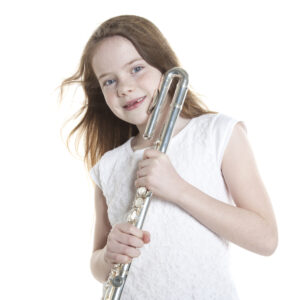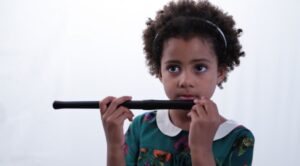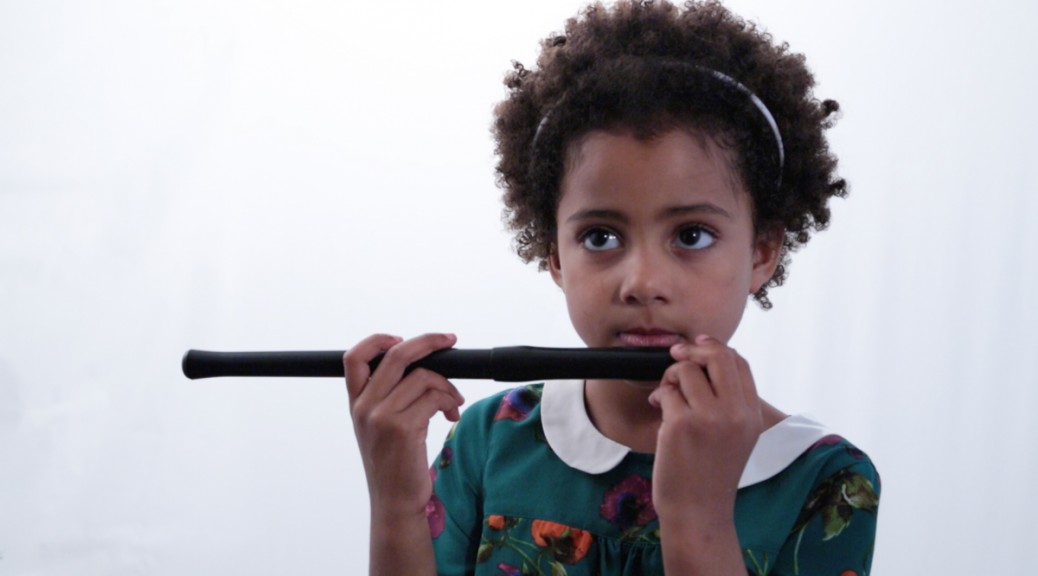Playing a musical instrument is amazing. It develops so many skills, and not just musical ones: it can build confidence, patience and self-reliance and can enhance verbal memory, spatial reasoning and literacy skills. It goes without saying that we want the best for our children, and certainly the experience of playing an instrument is an opportunity that many parents will want to give.
It seems to be a growing trend to start children on the flute at a younger and younger age. It isn’t uncommon for a parent to want to start a 5 or 6 year old. But is this wise? Are there any advantages? What are the dangers?
If you are reading this, you are probably researching starting your young child on the flute. Have you stopped to consider why? Is it something your child has expressed a huge interest in or is it your idea? Perhaps you’ve heard that the younger they start, the better player they will become? Whatever the reason, it can often be sensible to hold back on flute lessons for a few years – and I’ve written this article to explain why.
A good age to start instrumental lessons
Young children – from babies onwards – can gain enormously by all types of musical experience, and early childhood can be a wonderful time to explore and play. Spend time with your child singing songs, clapping, dancing and listening actively to music – taking small children to (appropriate) live performances can motivate their passion for music for life. This lays down the groundwork for a musical child before you start them on tuition on an instrument.
When I taught extensively for a music service, we had two intakes for beginner players: one at the age of 9 and another aged 11. You might be surprised to hear that in most cases, whatever age the child had started lessons at, by the time they reached the age of 12 they had all reached a similar standard.
One of my sons at the age of 7 decided he wanted to learn the bassoon. He was completely obsessed. We went through three long years of other music-making activities before he grew enough to start lessons. It was worth the wait: he stayed keen and made amazing progress and in the meantime avoided long-term damage to his body – and to a very expensive instrument! I am certain that if he had started lessons when he wanted, aged 7, he would not have become the player he is.
Challenges with starting a small beginner on flute
The flute itself has some particular challenges for children:
The length of the instrument

A child’s arms need to be long enough to comfortably hold the flute out to the side without twisting their back, stretching their neck to the left or holding their head down to an angle.
If the child is not physically large enough, physical problems as well as technical problems will almost certainly develop. These problems might not be immediately noticeable, but there are many adult players who have long-term problems due to bad posture and poor hand positions.
The weight of the flute
The flute may not feel heavy to you, but when held to the side it acts as a lever, putting downward pressure on the arms and making it feel heavier. For a small person this can lead to physical and technical problems as above.
Easily damaged
Like all woodwind instruments, flutes are mechanical items and easily susceptible to damage. Young children usually have not developed the dexterity to handle the instrument without inadvertently damaging it. A flute that doesn’t work properly will frustrate a player, who will more often than not blame themselves rather than the instrument, making them think “this isn’t for me”.
Solutions

There are a number of great solutions to these issues.
Flutes with curved headjoints (and more recently, the Jupiter Waveline) overcome the length issue, but they don’t address the weight problem.
It is possible to buy plastic flutes which are lighter in weight, again with curved head joints, but, in my opinion the sound quality is not good and they are frustrating for a musician who is keen or showing promise.
There is one very inexpensive and simple solution to this issue. I’ve long been an advocate of starting beginners – including adults – on a fife, like myfife or the Yamaha equivalent. The fife is a simple keyless instrument, and all the skills needed to play a flute can be taught and developed on it.
They are pretty much unbreakable, can be taken into the bath or used to dig in the sandpit and don’t cause any of the potential physical problems a full-sized flute can. The best part is that all of this is possible on an instrument which can cost less than £10.
You would not believe the joy and excitement when a youngster has mastered skills on the fife transfers to flute. It is amazing.
Of course the other instrument that should be considered for everyone wanting to start any wind instrument is the recorder.
Over many years I have taught countless people to play the fife and flute, from the age of 4 to 82, and I have found the optimum age to start lessons is around 9.
If your child is younger than this or small for their age but is desperate to play, please consult with a competent, trusted and well-experienced teacher, as you want to avoid any potential of long-term physical problems. Some teachers are willing to teach whatever the age, but ask yourself if they are acting in your child’s best interest, or whether they are doing it for the income. As a guide, I believe that a good indicator of when to begin formal instrumental lessons is when a child can freely read – and comprehend – a book on their own.
Whatever you decide, I wish you and your child the best in your flute journey.
Liz Goodwin is an educator and author of The Fife Book. She runs Flutewise, an organisation for young flute players, which organises and runs a wide range of events, across the UK and abroad.

